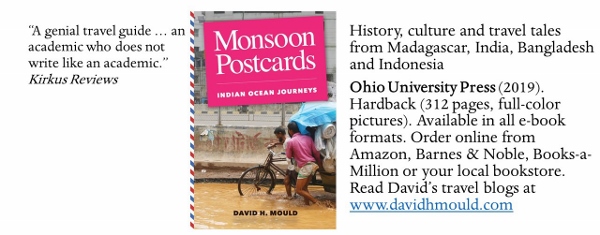Get your kicks on Route 6
“It’s my tribute to Route 66!” Sujoy Vai struck a pose under the sign of his roadside eatery in Rajshahi, a city in western Bangladesh. He gestured towards the midday melee of auto-rickshaws, carts and battered buses. “We’re on Bangladesh Route 6.”
With his shoulder-length graying hair, sun-beaten face, faded salmon pink T-shirt, jeans and sandals, Sujoy could have passed for an extra from the cult classic Easy Rider, or a member of a 70s rock band that had never abandoned its studiously scruffy dress code. I guessed he was in his early 50s. The Rolling Stones’ rendition of the rhythm and blues standard, released on their 1964 debut album, had inspired the restaurant name.
Route 66 is a story by itself. Composed in 1946 by songwriter Bobby Troup after a 10-day cross-country trip with his wife in their 1941 Buick, two versions—an upbeat, jazzy one by Nat King Cole and a softer, swing-style rendering by Bing Crosby with the Andrews Sisters—hit the Billboard charts that year. Other artists—from Chuck Berry to Van Morrison to Perry Como—went on to record it. For Sujoy, it was the Stones’ version that conjured up his American dream of the open road, where he could “go take that California trip.”
National Route 6 in Bangladesh does not evoke the same feelings. It winds a mere 90 miles southeast from Rajshahi in western Bangladesh along the Padma (Ganges) valley before dead-ending at the river port of Kashinathpur on the Jamuna (Brahmaputra). The only kicks you’re likely to get are from goats straying onto the road.
At the Route 6 De Lounge (to give it its full name), Sujoy looked a little out of place among a young, mostly male, clean-cut clientele, with neatly pressed shirts and pants and short haircuts. Sujoy, who may have renounced capitalism at one time in his life, is now a successful entrepreneur—the restaurant cum coffee house cum smoothie bar just outside the main gate of the University of Rajshahi is a popular hangout for students and faculty. Sujoy’s customers buy into the American popular culture motif with Facebook endorsements. “Oh man, it is simply awesome,” wrote one. “I am just loving it, dude.” This is probably untranslatable into Bangla.
The original US Route 66 signs had black lettering on a white background, not the red, white and blue logo of the interstate highway Sujoy chose for his Route 6 sign. I decided not to quibble about accuracy in signage, but to bring him a black and white version if I ever visit Rajshahi again. Of course, most of the original signs along the US highway were stolen by collectors and Stones’ fans years ago; today, the online trade is in embossed aluminum reproductions, touched up with lithographed rust stains and bullet holes to look like the real thing. At least Sujoy is more creative than the owner of the Outback Fast Food & Coffee House down the road, which shamelessly reproduces the restaurant chain’s logo. And the Route 6 food is good, if not exactly what you’d find winding from Chicago to LA--the standard Bangladesh mixed menu of Bangla, Indian, Chinese, Thai and Continental dishes, along with the signature Route 6 burger.


